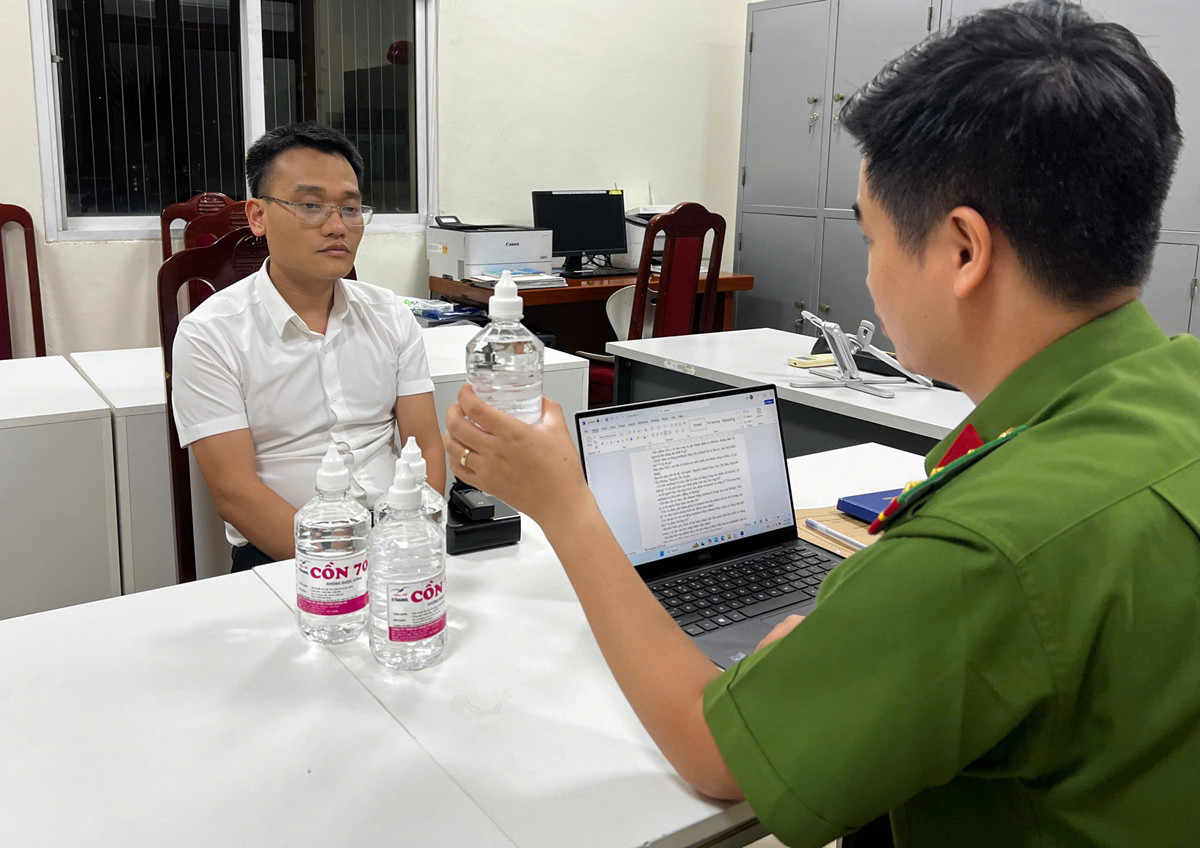Hanoi police recently confiscated 50,000 bottles of counterfeit medical alcohol, sparking serious concerns about the safety of antiseptic products on the market. These bottles contained methanol, a highly toxic substance that poses severe public health risks.
 |
 |
Authorities in Hanoi arrested Pham Dinh Tuan, Vice Chairman of the People’s Committee of Chuc Son Town (Chuong My District), for his involvement in producing fake medical alcohol.
Tuan and his younger brother established Ngan Ha Company to manufacture 70-degree medical alcohol. To maximize profits, they replaced ethanol with methanol - a toxic industrial chemical - using a formula of 70% methanol and 30% water. The methanol-based alcohol was sold at VND 11,000 (USD 0.43) per 500ml bottle, while ethanol-based alcohol sold for VND 12,000-13,000 (USD 0.47-0.51) per 500ml bottle.
This illegal practice not only violates the law but also severely endangers public health. Authorities seized around 50,000 fake medical alcohol bottles and sealed off the production line.
Severe consequences
Dr. Nguyen Trung Nguyen, Director of the Poison Control Center at Bach Mai Hospital in Hanoi, stated that methanol is a colorless, odorless industrial alcohol commonly used in paints, fuel, and solvents. It is easily mistaken for ethanol due to its similar sweet taste and feel. However, methanol metabolizes into formic acid in the body within 1-2 days, leading to metabolic acidosis with symptoms such as blurred vision, confusion, rapid breathing, seizures, coma, and even death.
One critical case involved a 55-year-old patient from Hoang Mai District (Hanoi) who was hospitalized in a deep coma with respiratory failure and severe brain damage after using fake medical alcohol as a mouthwash for toothache relief. Blood tests revealed a methanol concentration of 116.63 mg/dL. The alcohol bottle, purchased from a local pharmacy, contained only methanol.
Similarly, in 2024, two foreign tourists in Hoi An (Quang Nam) died after consuming a cocktail made with counterfeit medical alcohol used by a bartender.
Bach Mai Hospital’s Poison Control Center has recorded dozens of methanol poisoning cases with complications such as blindness and neurological damage - mostly due to ingestion of industrial alcohol mislabelled as medical.

Associate Professor Nguyen Hoai Nam, Chairman of the Ho Chi Minh City Venous Society, warned that counterfeit alcohol is dangerous not only when ingested or used as a mouthwash but also when applied to open wounds.
Alarmingly, these fake products, disguised as genuine medical alcohol and sold cheaply, could enter healthcare facilities through procurement channels. As a result, seriously ill patients, newborns, and those undergoing surgery or obstetric procedures may face severe risks from substandard antiseptic products.
The Poison Control Center has repeatedly reported these dangers to the Ministry of Health. In response, the ministry issued a directive banning the sale of antiseptic alcohol containing methanol at pharmacies. However, many producers continue to exploit loopholes by replicating authentic packaging, making it difficult for pharmacists and consumers to detect counterfeits.
Methanol should be color-coded for identification
Associate Professor Nguyen Duy Thinh, former lecturer at the Institute of Food Technology (Hanoi University of Science and Technology), noted that industrial alcohol management in Vietnam remains lax. In the past, imported industrial alcohol was color-coded green to prevent confusion, but domestically produced methanol is now sold colorless, creating opportunities for illegal blending with ethanol to produce counterfeit medical alcohol.
Thinh emphasized that some countries add a color indicator to methanol, which is simple yet effective, but Vietnam has not yet implemented such measures. This allows methanol to “disguise” itself as medical alcohol, making detection difficult.
Dr. Nguyen urged that stricter controls are needed from registration and business licensing to inspections and rigorous penalties for violations involving counterfeit alcohol production and distribution.
Experts advise consumers to:
Choose reputable pharmacies and request receipts to ensure accountability.
Carefully inspect labels, ensuring the “Ingredients” section clearly states ethanol or isopropanol content and excludes methanol.
The “Usage” section must explicitly mention disinfection for human use.
Be cautious if the label states “supports disinfection” or “for instrument sterilization,” as such products may not be safe for direct human use.
Phuong Thuy